Kanaya Tunnel on the Second Tomei Expressway (Shizuoka prefecture) 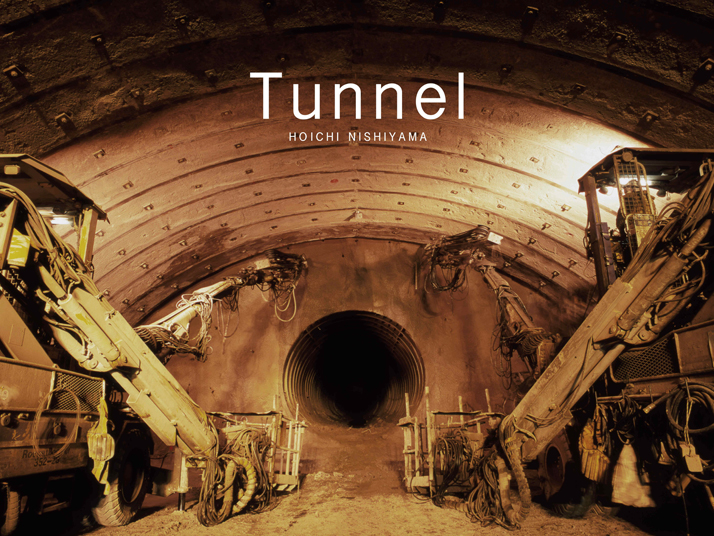
The hole in the center is called a pilot drift. You first drill with TBM and widen it with NATM (refer to “comment”). It is called the “Central Drift Pilot Widening Method”. Many tunnels on the Second Tomei Expressway in Shizuoka have used this.
photo © Hoichi Nishiyama
A rare collection has just arrived at Yatzer and we felt compelled to share a rare experience and journey into the depths of the world below our pedestrian experiences. A world renowned Japanese 'underground photographer', Hoichi Nishiyama originally published his civil engineering photography book named 'Tunnel' in 2005. Now the collection of 56 images will be available in a special iPad edition app with 30 new, unpublished works added to the list. Each photograph will be accompanied by a detailed text written by Nishiyama and the editor of the book, Naoko Aono, with background and an insight into the underground world many people will never get to see.
Below our above ground marvels (bridges and skyscrapers), there is a world of astonishing work accomplished by engineers and miners that allows for subway transportation or prevents river floods for example. This necessary and important work takes part in a world rarely experienced; Hoichi Nishiyama is the man who has made a career out of capturing these landscapes in their purest state.
Main Tunnel on the Hida Tunnel (Gifu prefecture)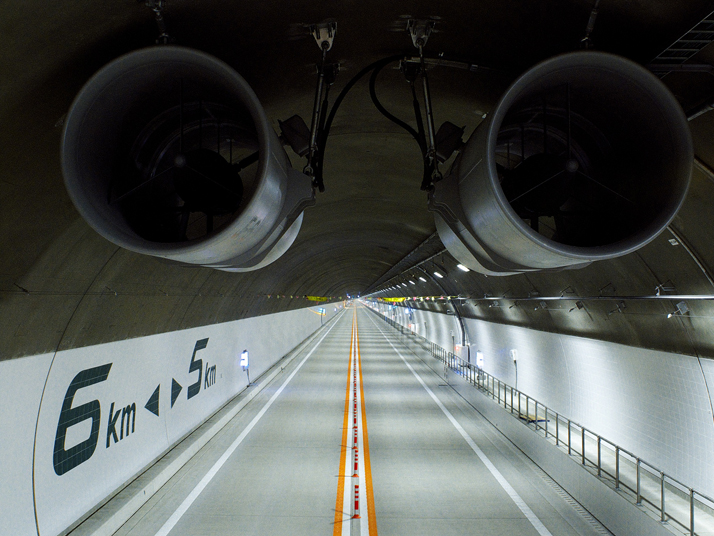
Taken from a truck for high-lift work, looking down from the tunnel ceiling before opening to the public, Once it opened, this angle became exclusive for the very few like the maintenance crew.
photo © Hoichi Nishiyama
Metropolitan Central Loop Expressway, Shinagawa Line, Shield Machine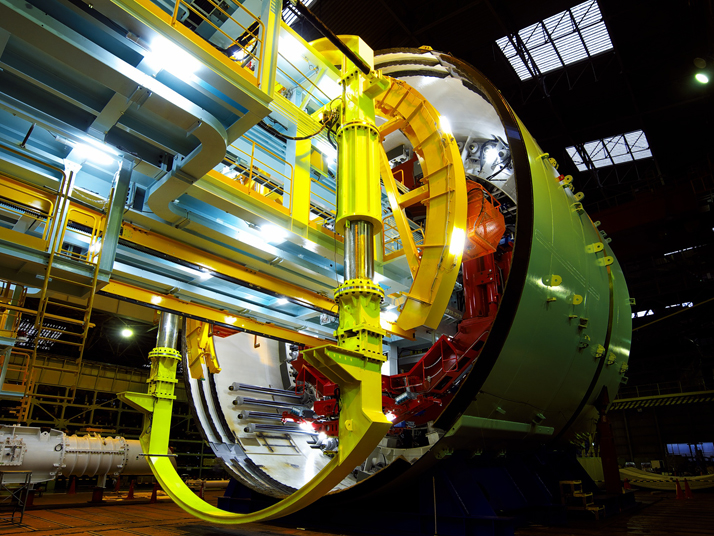
The backside of the giant shield machine, assembled in the factory. It is first assembled for a test and taken apart to be brought on site, reassembled to be ready for drilling.
photo © Hoichi Nishiyama
These long and arduous projects have a very dark beginning as the initial excavations begin. This first hole is called a 'pilot drift.' You first drill with a tunnel boring machine (TBM) or as people call it, a 'mole' and then widen it with the New Austrian Widening Method (NATM) as displayed in the Kanaya Tunnel on the Second Tomei Expressway. In this photo, Nishiyama captures the preparation and the point of no return. At this moment, plans have been made, the tunnel has been imagined and the team prepares to proceed with a plan. Only one picture captures the beginning because it will never be the same. It is mysterious, magical, tense and beautiful all at the same time.
Throughout the photography process, these massive landscapes maintain a level of structural continuity that speaks of the skill and teamwork of the engineers involved. Nishiyama captures the distance and sight lines that allow us to embrace the imagination and complexity of each space. At the Tokyo Bay site, it took eight machines to drill the distance of 20km both up and down, which means each shield machine took on about 2.5km. The machines will meet at some point to be dismantled upon completion. It is perplexing to imagine how they drill from both sides to meet with only a difference of a millimeter (if any).
We can understand that the process and materials may not be seductive to the common eye but we understand that our Yatzer readers have the eyes to see beauty in the most complex of processes and experiences. Although the process is unknown and unfamiliar, Hoichi Nishiyama manages to artfully capture the imagination and expressions of these tunnels. They are silent, although you can imagine how sound moves through the space. They are lonely, although you imagine the immense team and teamwork it takes to makes these projects come to fruition. Finally, they are simple in form, although you can imagine the complexity of the machinery needed in order to achieve such spaces. Nishiyama's work is rare and his ambition to continue documenting such landscapes commendable. Chiba Tunnel (Chiba prefecture)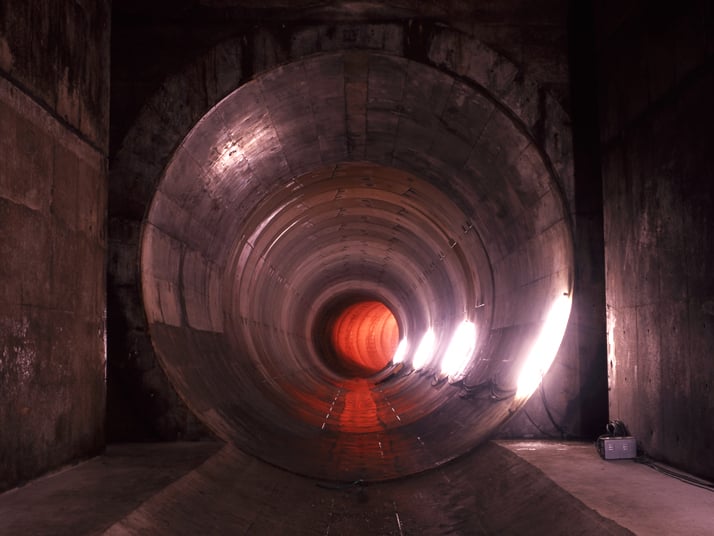
This is a tunnel to prevent the underground river to flood so that water can be released when the rivers overground may flood. From the rectangular vertical shaft, I photographed the circle tunnel dug with a shield machine. Since the color temperature of the light is different from front to back, it is possible to take photos like contemporary art. On film, from time to time, colors and sceneries differ from the naked eye.
photo © Hoichi Nishiyama
Tokyo Bay Aqualine (Tokyo-Chiba prefecture)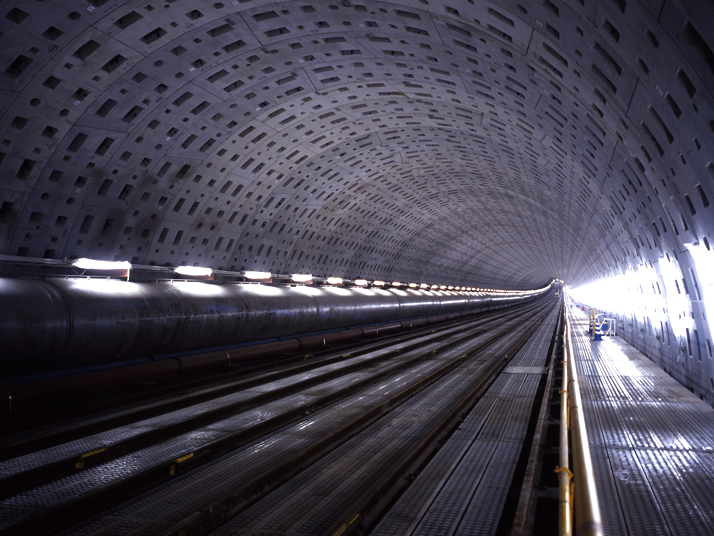
The tunnel underneath Tokyo Bay is finished drilling and waiting for completion. Eight machines almost simultaneously drilled the distance of about 20km both up and down, which means each shield machine took on about 2.5km. The machines will meet at some point to be dismantled upon completion. It never fails to surprise me how they drill from both sides to meet with only a difference of a millimeter if any.
photo © Hoichi Nishiyama
About Hoichi Nishiyama
Born in 1952 in Tokyo, Nishiyama graduated from Tokyo Zokei University’s design department in photography. After working at Hakuhodo and Tokyu agency, he turned to freelance projects. After working in commercial photography, he moved on to civil engineering photography in 1993 where his photographs of past legacies in civil engineering and civil engineering construction have been regularly printed in industry magazines. He also photographs calendars and completion photographs for major construction companies. He is also the chief of the “photographing civil engineering” office and has published photography books such as: Harbor Legacy (Japan Dredging and Reclamation Engineering Association) and Taushubetsu (Kodansha) in 2002, Civil Engineering by the Water (INAX publishing) in 2003 and SADO MINE (Niigata Daily Newspaper Company in 2011. He has held photography exhibitions every year since 1997. His work, Taushubetsu, was awarded the Publishing Culture Award 2003 by the Institution of Civil Engineers.
Ring Road 7 underground river (Tokyo)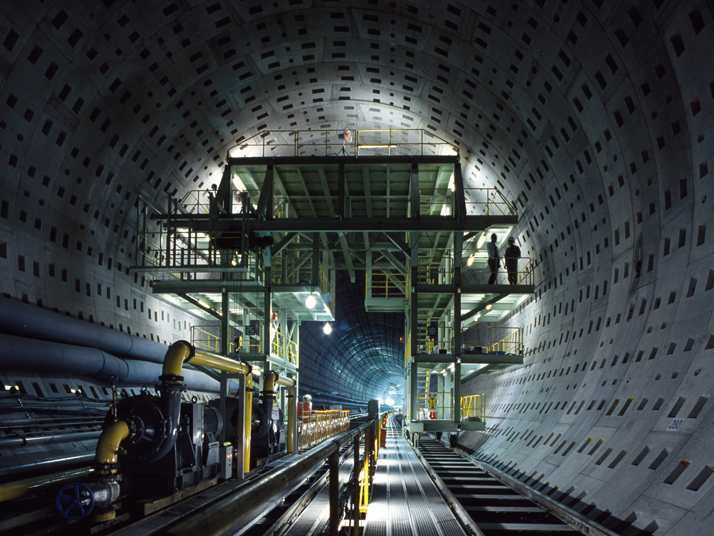
“Kandagawa” River, which gave the title to a popular song by the same name in the 1970s, has been widened and deepened to the utmost extent to prevent flooding. Yet it has flooded a number of times, as the asphalt covered ground in Tokyo scarcely holds rainwater. To cope with such urban-type flooding, a grand idea was proposed. It is the "Ring Road 7 underground river project," in which a tunnel 12.5m in diameter and 30km in length is to be dug at a depth of 40m under Ring Road 7 in uptown Tokyo. The tunnel would serve as an underground river leading to Tokyo Bay.
photo © Hoichi Nishiyama
Toyosato Tunnel (Osaka)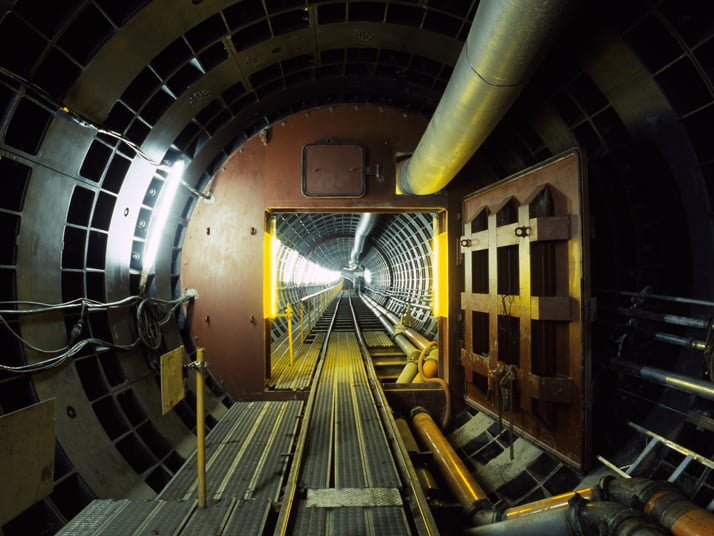
A tunnel under Yodogawa River. The doors, like a vault, are to be closed when there is too much underground water flowing in. It prevents more water to come in. One of the two hoses sends the slurry into the cutting face, and the other to drain. So as not to diminish under the pressure of the underground water, the slurry puts the pressure while digging.
photo © Hoichi Nishiyama
Abo Tunnel (Nagano prefecture-Gifu prefecture)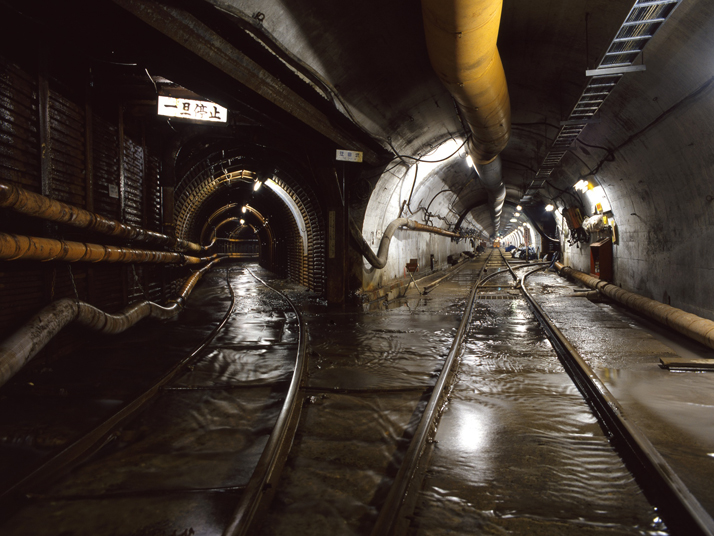
The tunnel connects Oku-hida in Gifu prefecture to Kami-kochi in Nagano prefecture. In the tunnel, you will find the same hot spring water as Hirayu Onsen in the town of Hida Onsen. Despite difficulties in construction such as digging a drain tunnel, it was nice to soak in a hot spring in the site office after the shoot.
photo © Hoichi Nishiyama
Tokyo Bay Aqualine (Tokyo-Chiba prefecture)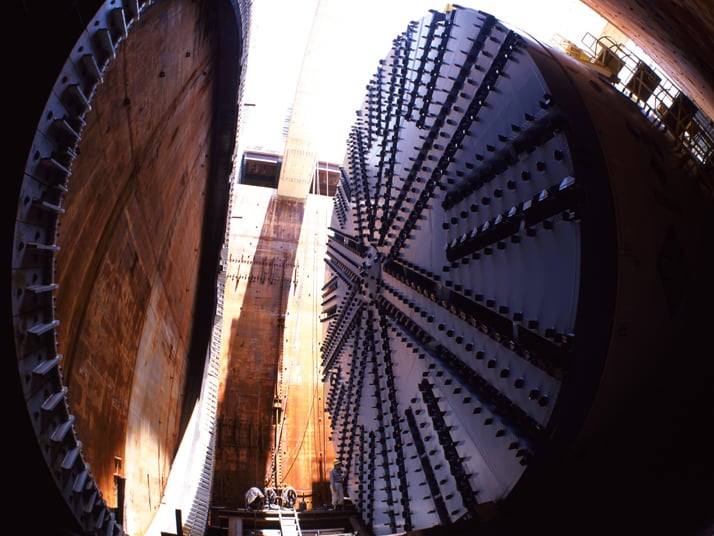
As part of the tunnel construction for the road extending under Tokyo Bay, the shield machine with a 12m diameter has drilled about 5km from Kisarazu’s reclaimed island (the present Umi-hotaru) to the Kawasaki Ventilation Tower (Wind Tower). The soil at the bottom of Tokyo Bay is soft containing water, and as the walls cannot support themselves, the wall that is to be drilled on the Kawasaki side is being frozen in a gigantic freezing facility. Everyone on site is nervous before it starts since there is a danger of collapse due to possible temperature changes.
photo © Hoichi Nishiyama















